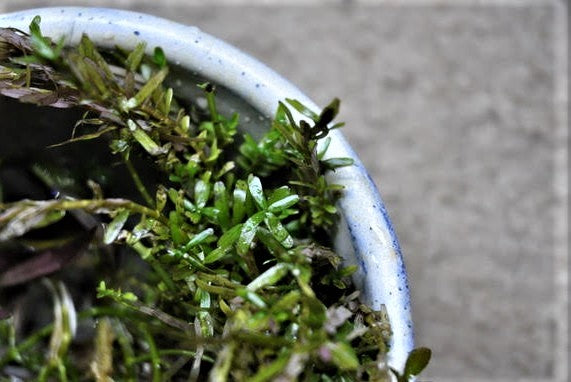
6 Easy Steps to Bleach Dip Aquarium Plants
There are reasons why many of us aquarists choose to buy tissue culture plants: no snails, no algae, an abundance of healthy plants. However, buying tissue culture plants every time isn't a luxury that everyone can afford.
Lead bunch or potted plants are much more common, more affordable, and easier to get. However, they do come with the possibility of hitchhikers such as algae and pests. In addition, I’m not above collecting plants from the wild myself which can carry the same problems (please do be mindful of state/county laws, the property on which you are collecting, and the amount--always take less than 10%).
Today, I'll be explaining one of the many ways you can disinfect your plants before placing them in your tank. Whether your new plants were ordered from Buce Plant, another supplier, local fish store, a fellow hobbyist, or collected from nature, a bleach dip is a surefire way to ensure no algae or pests are carried into your tanks!
- Side note: Quarantining your aquarium plants is also an option - Click here to learn "How to Quarantine New Aquarium Plants"
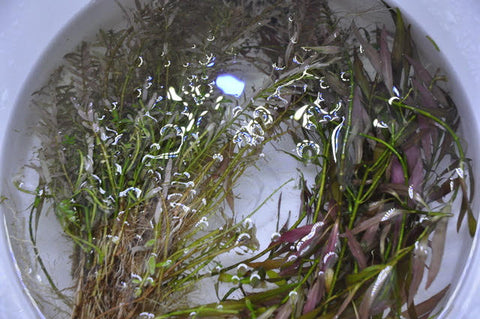
Some people don't care much about critters or algae while others will meticulously quarantine their plants. Personally, I’m not one to quarantine/disinfect plants religiously. I only bleach dip if the plants have algae on them or come from the wild (you do not want dragonfly larvae to decimate your nano fish or shrimp population). I have two Carinotetraodon irrubesco that love snails. However, if I’m receiving plants from someplace I’ve never seen with my own eyes or from the wild, I want to ensure that I won’t introduce unwanted denizens to my aquariums.
I understand that bleach might seem too harsh for aquatic plants. Although, if you perform a quick bleach dip & make sure you rinse the plants off thoroughly, it won't be harmful to your plants or your tank. In fact, bleach is a great plant disinfectant and will also rid of algae! A small amount can prevent introducing any new algae, pests, or disease into your tank.
Disclaimer: Please keep in mind that this dipping method will focus on ridding your plants of potential hitchhikers and prominent algae, but algae can still show up in your aquarium due to other factors.
Bleach is a powerful oxidizer, so please be cautious when using it. Using gloves is a good idea. If you like to live dangerously, please be sure to immediately wash the affected area with soap and water. If bleach gets into your eyes, immediately flush them with water and seek medical help. Disclaimers aside, let me get into the process of disinfecting your new plants!
What you will need:
- Unscented bleach
- Disposable gloves
- 2 separate containers
- Dechlorinator
Step 1: Manual Removal/General Prep
Once you've received your new plants, take your time to see if there are any snails/pests you can see and remove them.
If you see any leaves that are melting from transport or have algae, pull them off. Depending on the type of plant you buy, remove any lead strip or plastic pot with rock wool holding the plants.
Step 2: Rinsing Plants
Fill up a container with water and immerse the plants. Shake vigorously. This will rinse the plants of any loose dead leaves and/or melt you may have missed in Step 1. For more sensitive plants, rinsing them under cool running water would be much more desirable. Repeat this step as many times as you’d like. Then, pour out the entire contents and rinse out the container. Set your plants aside.
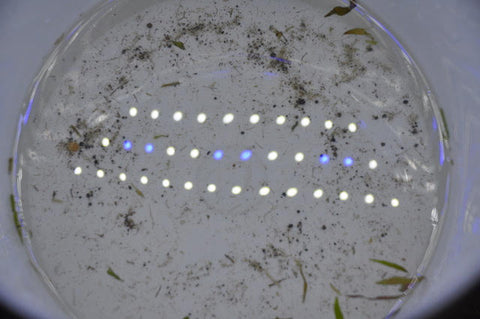
Notice the dirt and loose leaves left behind after rinse!
Step 3: Drawing the bath
This is the dangerous part--make sure you're wearing your gloves. The general rule is 1 part bleach for every 20 parts of water (1:20 ratio). Before adding the bleach, make sure that it is unscented without any other added chemicals. Mix bleach and water together.
Step 4: The dip
- Note: Before performing bleach dip, I recommend preparing your second container with fresh water and a dose of dechlorinator (dechlorinator such as SL- Aqua Black More Stabilizer or SeaChem Prime are great options). This way you will be better prepared for Step 5.
Add the plants into the container with your bleach mix and make sure they’re all completely submerged.
Soak times will vary depending on the plants:
Mosses, thinly leaved/delicate plants, and more sensitive stem plants (Cryptocoryne, Utricularia Graminifolia, Hornwort, etc) should be kept under watch, do not dip them for more than 90 seconds.
More average plants (Echinodorus species, most stem plants, Bucephalandra species, etc) should be submerged in the bleach solution for at least 120 seconds. (Since I’m dipping Rotala and Ludwigia species, I’ve set a timer for 120 seconds.)
The toughest of plants (Anubias species, Java fern) can be dipped for 150 seconds. 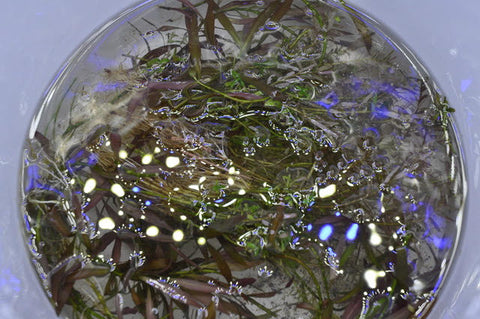
- Note: Keep in mind that all these times may affect your plants in different ways. If you are worried about hurting your plants, you can do multiple weaker/shorter dips in order to sterilize your plants.
Step 5: Rinse & Dechlorinate
Before your timer rings, have your bleach dip container near a faucet. Once time is up, immediately pull your plants from the container and completely rinse out the bleach. I like to rinse the plants clean for at least a minute before adding them to the container of water and dechlorinator solution. Allow your plants to soak with the dechlorinator for at least a couple minutes.
Step 6: You’re done!
At this point, you are officially done with the bleach dip! If you're still concerned about snail eggs because of their casings, I recommend keeping the plants in a separate container/tank for a while to keep an eye on them before planting. You can quarantine your plants for 2-3 weeks to ensure that nothing undesired makes its way into your tank. It’s all up to personal preference! You can now add your sterile plants to your aquarium if you wish.
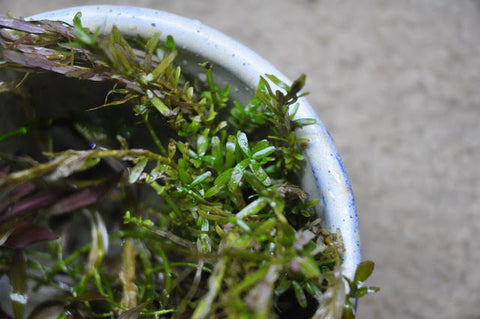
Tell us - Was this article helpful? Please comment your thoughts below!
If you have any questions regarding this article, please DM us on Instagram, Facebook, or email us directly at support@buceplant.com so we can assist you - @buceplant





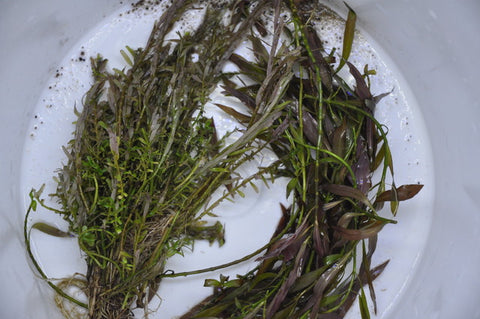
Comments
Leave a comment